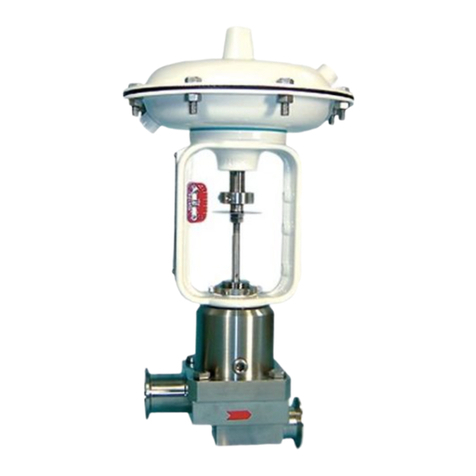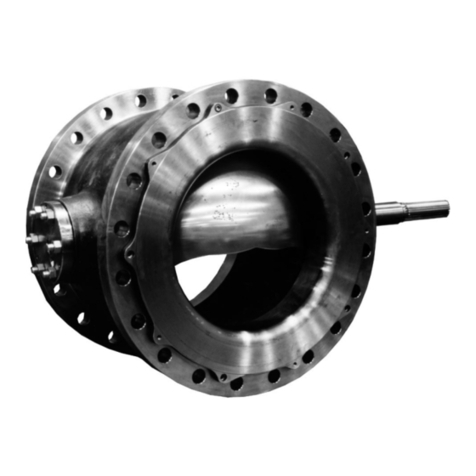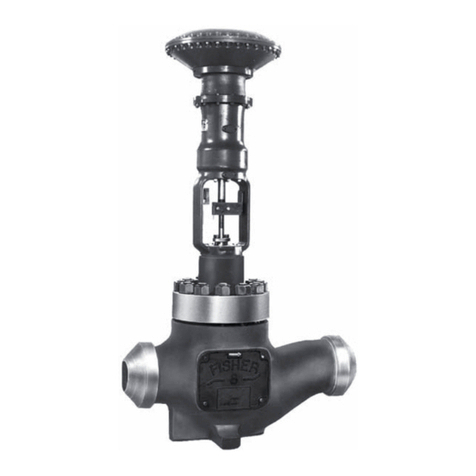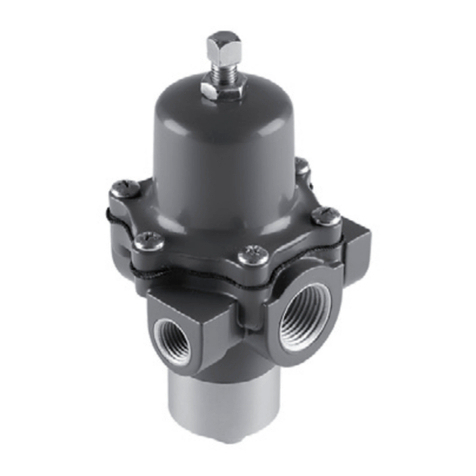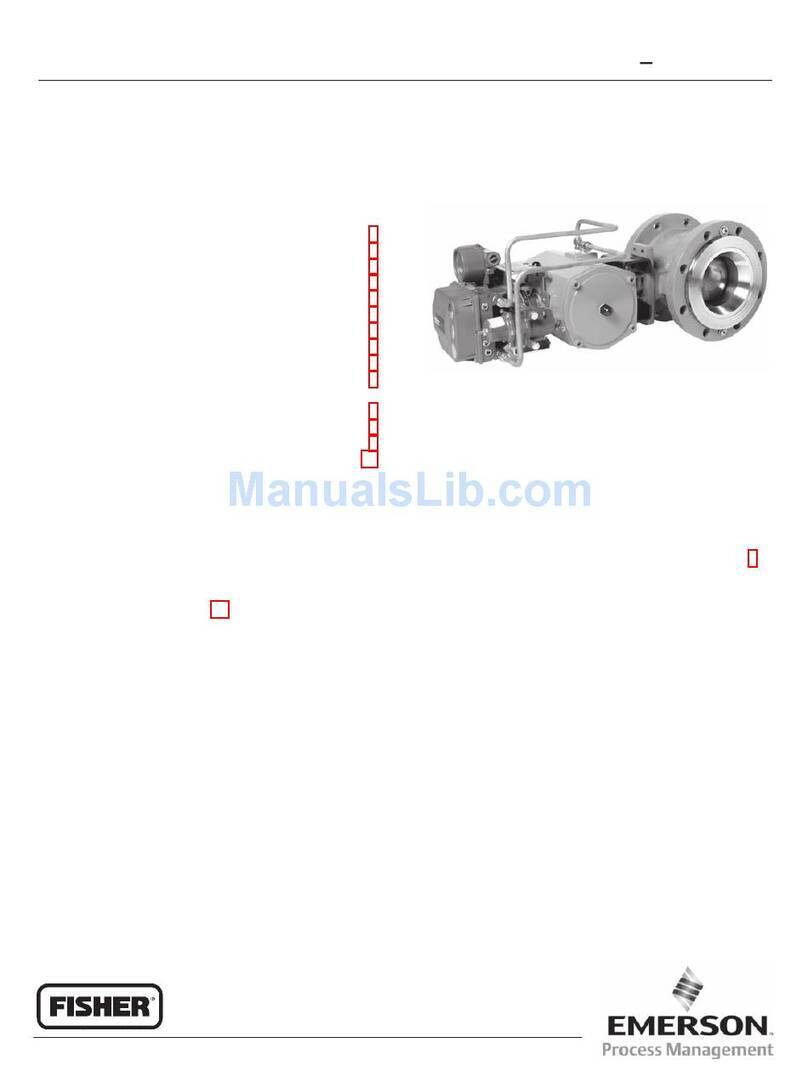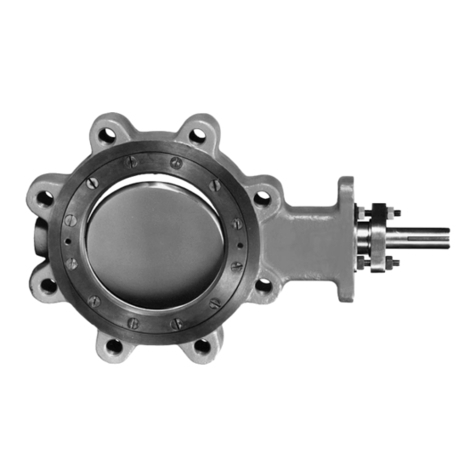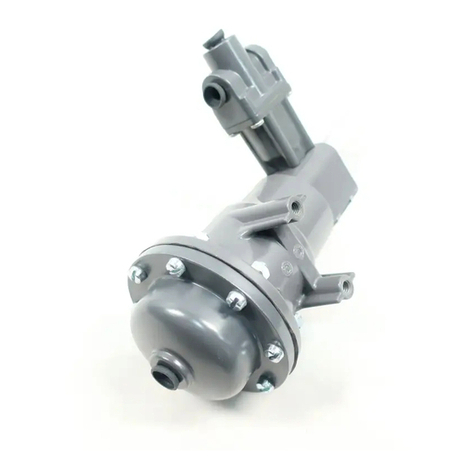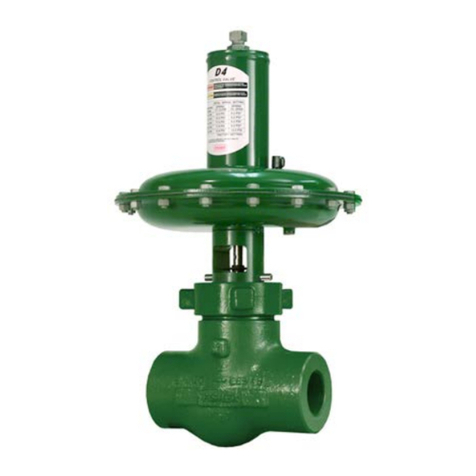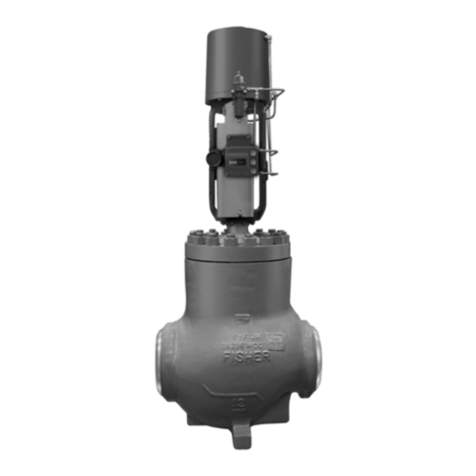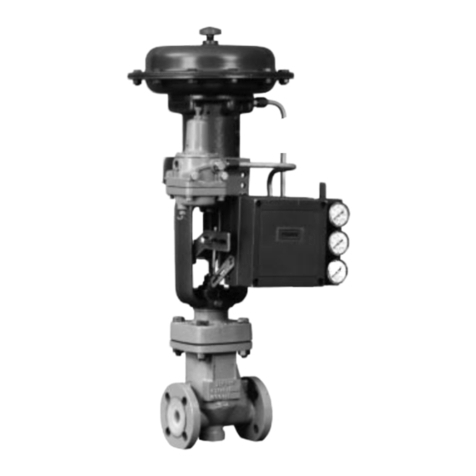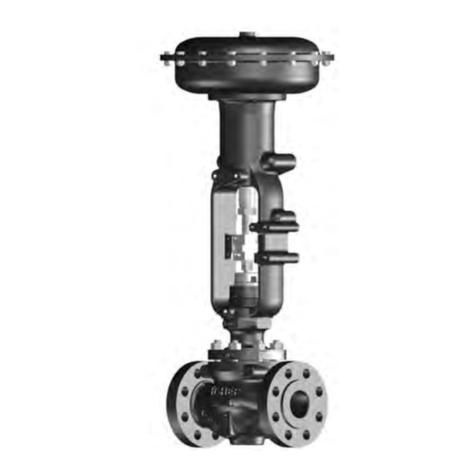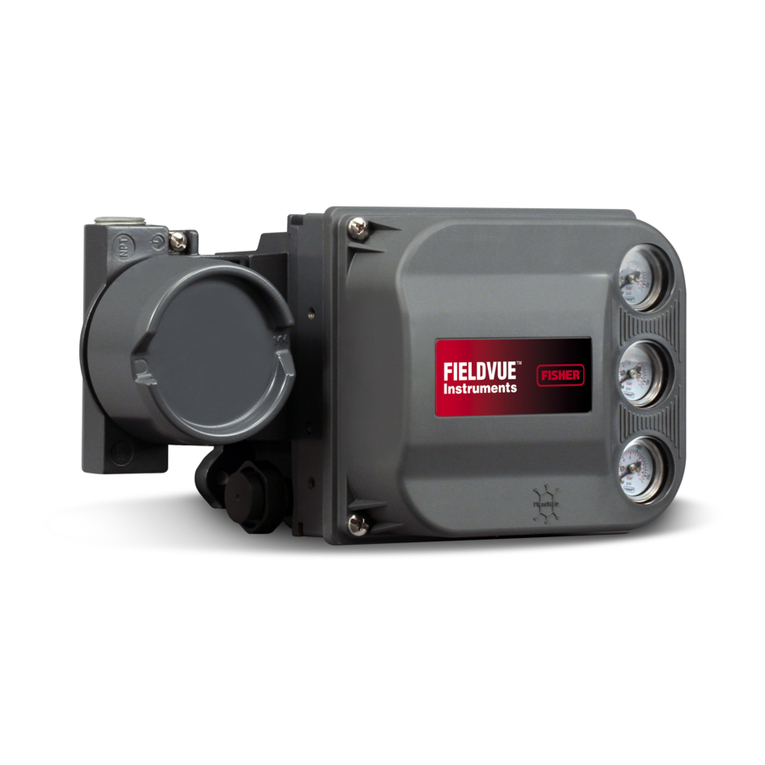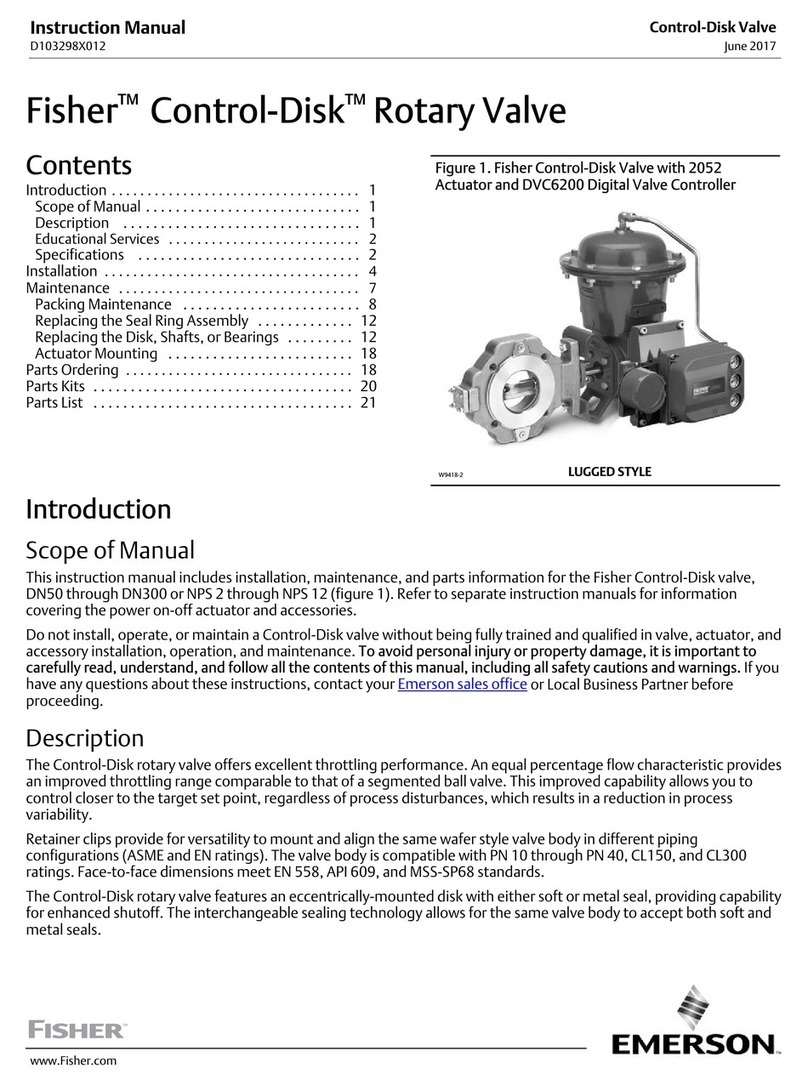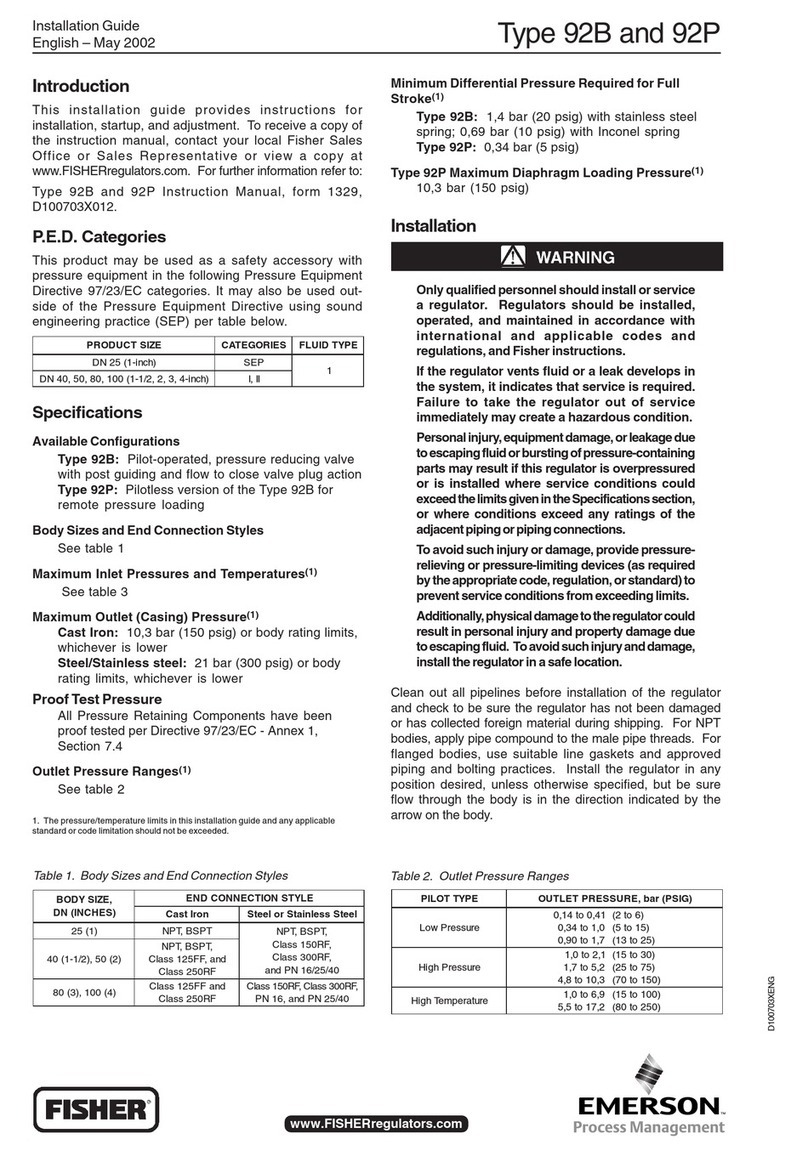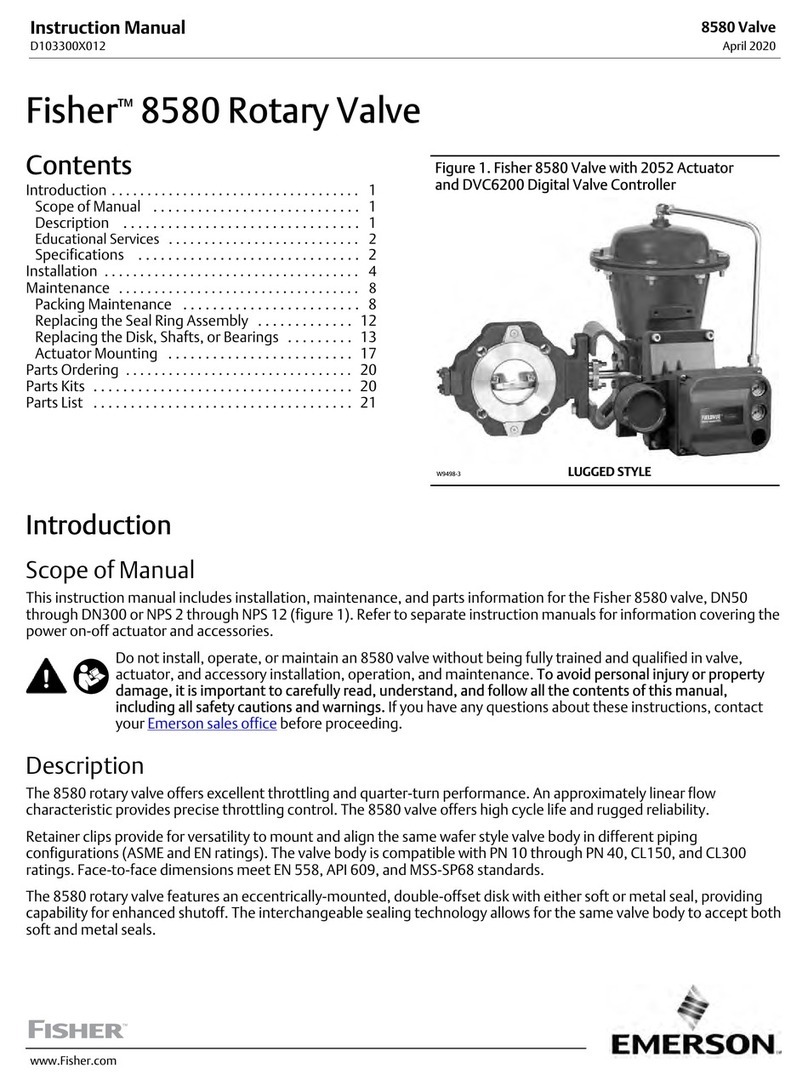
Instruction Manual
D103563X012
DVC6200p Digital Valve Controller
June 2017
1
Contents
Section 1 Introduction and Specifications 3.
Scope of Manual 3..............................
Conventions Used in the Manual 3................
Description 3..................................
Specifications 3................................
Related Information 7...........................
Educational Services 7...........................
Section 2 Wiring Practices 11.............
Quick Connect Cable Entry 11....................
Communication Connections 12..................
Section 3 Configuration 13...............
Transducer Block Mode 13......................
Guided Setup 14...............................
Manual Setup 14...............................
Reponse Control 15............................
Travel/Pressure Control 15..................
Travel Deviation Fallback 16.................
Travel Tuning Set 16.......................
Pressure Tuning Set 19.....................
Outblock Selection 19......................
Change Tuning and Integral Setting 20........
Performance Tuning 21.....................
Input Characterization 21...................
Output Synchronize 16.....................
Instrument 22................................
Enter Assembly Specification 23..............
Units 26.....................................
Security 26...................................
Classic View 26.................................
Alert Setup 27.................................
Travel Alerts 27...............................
Travel Limits 28...............................
Travel History Alerts 29.........................
Pressure Alerts 31.............................
Pressure A/B Alerts 31..........................
Temperature Alerts 32.........................
Electronics Alerts 32...........................
Memory Alerts 33.............................
Block Alerts 33................................
Proximity Alerts 33............................
Calibration Alerts 34...........................
AI Limits 34..................................
Section 4 Calibration 35.................
Calibration Overview 35.........................
Calibration 35..................................
Auto 35......................................
Manual 36...................................
Relay 36.....................................
Supply Pressure Sensor 39......................
Pressure A or B Sensor 38.......................
Auxiliary Terminal Calibration 40..................
Section 5 Viewing Device
Variables and Diagnostics 41...........
Overview 41...................................
Status and Primary Purpose Variables 41..........
Device Information 41.........................
Service Tools 42................................
Active Alerts 42...............................
Diagnostics 42................................
Variables 42..................................
Maintenance 43...............................
Section 6 Maintenance and
Troubleshooting 45...................
Replacing the Magnetic Feedback Assembly 46......
Module Base Maintenance 46.....................
Tools Required 46.............................
Component Replacement 46....................
Removing the Module Base 47..................
Replacing the Module Base 48...................
Submodule Maintenance 49......................
I/P Converter 49...............................
Printed Wiring Board (PWB) Assembly 51..........
Pneumatic Relay 52............................
Gauges, Pipe Plugs or Tire Valves 52..............
Terminal Box 53................................
Removing the Terminal Box 53..................
Replacing the Terminal Box 53...................
Stroking the Digital Valve Controller Output 54......
Instrument Troubleshooting 54...................
Section 7 Parts 59......................
Parts Ordering 59...............................
Parts Kits 59...................................
Parts List 60...................................
Housing 60...................................
Common Parts 61.............................
Module Base 61...............................
I/P Converter Assembly 61......................
Relay 61.....................................
Terminal Box 62...............................
PWB Assembly 62.............................
Pressure Gauges, Pipe Plugs, or
Tire Valve Assemblies 62.....................
DVC6215 Feedback Unit 62......................
Appendix A Principle of Operation 69......
Digital Valve Controller Operation 69..............
Appendix B Device Diagnostics 71.........
